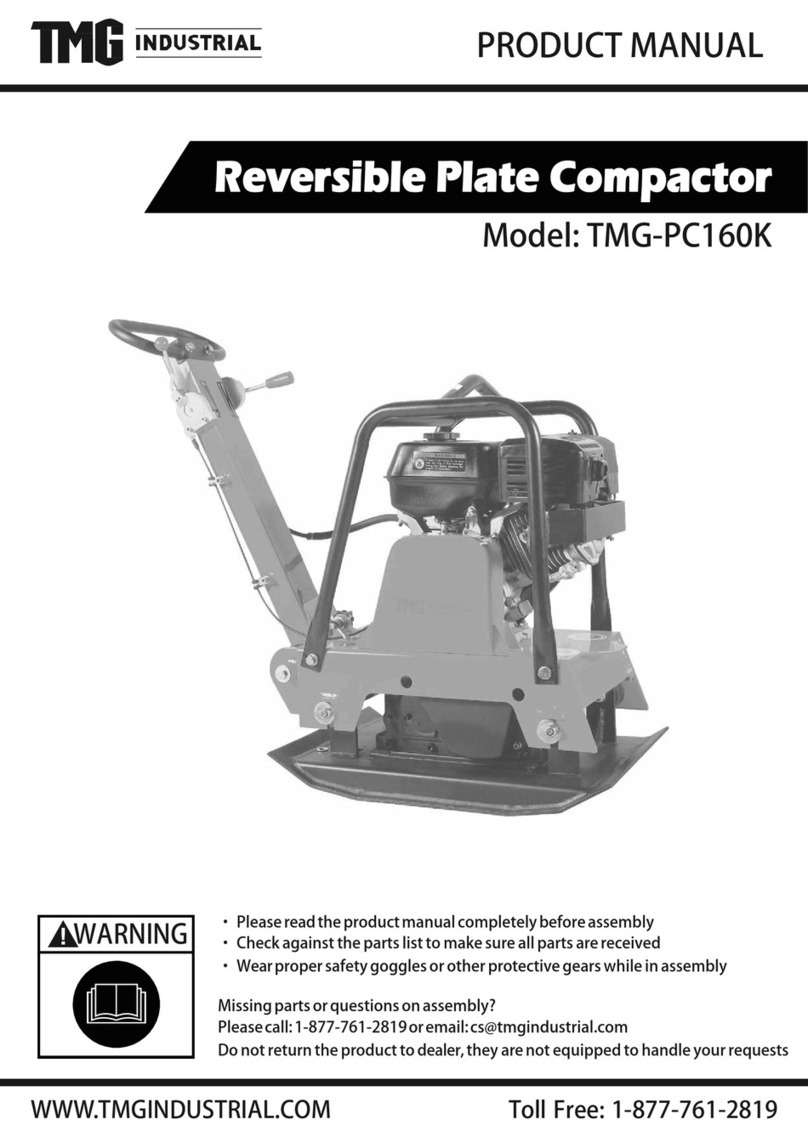
TAMPING RAMMERS
en
8
5.5 MAINTENANCE SERVICE AND STORAGE
5.5.1. Before undertaking any maintenance service on the compacting rammer, STOP THE
ENGINE COMPLETELY.
5.5.2. Daily maintenance service:
Remove all dirt, dust or oil entirely from the machine. Check the air filter, cleaning it as necessary.
Tighten up any areas where oil has leaked, and make sure that all other areas are tightened as
necessary.
5.5.3. Weekly maintenance service (every 50 hours):
Remove the cap of the air filter and clean the internal element using a neutral cleansing solution.
After drying, apply a fuel composed of a mixture of petrol and oil (if possible, utilize the fuel in use),
and shake well. Then, gently squeeze the primary external element (sponge) and place it on the
secondary internal element to cover it.
In the sparking plug, adjust the distance between electrodes to a value of between 0.7 and 0.8 mm.
Remove the oil cap (situated above the oil-level visor), and put the machine in a horizontal position
in such a way that the oil hole serves to drain off the used oil, placing the machine with the hole
downwards in order to drain the oil completely.
Place the machine upright again, and use the same hole to pour in new oil, until the correct level can
be seen in the visor.
The first change of oil should be made after 50 hours in operation, from the second time onwards
every 300 hours in operation.
5.5.4. Monthly maintenance service (every 300 hours):
Clean the inside of the fuel tank. Carefully clean every part of the machine, and again make sure all
the bolts and nuts are tightened up as necessary.
5.5.5. Correct storage:
For a prolonged period of storage after a particular job has been terminated, completely drain the
fuel from the interior of the tank, the fuel tube and the carburettor.
Remove the sparking plug, pour a few drops of oil into the cylinder, and by hand get the engine to
make a few revolutions in such a way that the oil reaches the whole area. As for the exterior, clean it
with a cloth dampened with oil.
To store the machine, keep it under cover in a location free from humidity and dust and out of direct
sunlight.
5.6 LOCALIZING AND REPAIRING FAULTS
PETROL ENGINE
Does not start:
- There is fuel, but the sparking plug does not produce a spark
•There is electricity in the high-tension cable
Sparking plug flecked
Carbon deposit in the sparking plug
Short-circuit due to insufficient insulation of the sparking plug
Incorrect separation between electrodes
•There is no electricity in the high-tension cable
Switch of detention button short-circuited
Ignition coil defective
Insulation of condenser deficient or short-circuited
Ignition coil broken or short-circuited
•Compression satisfactory
Incorrect fuel





























